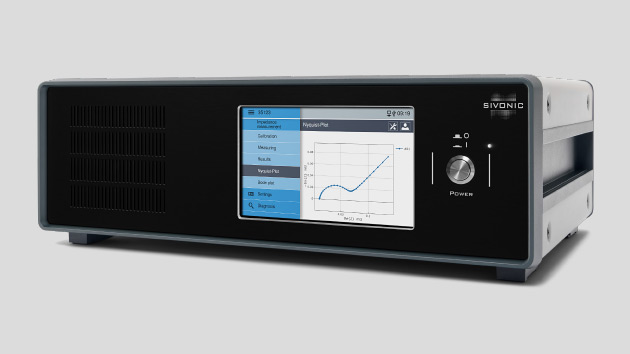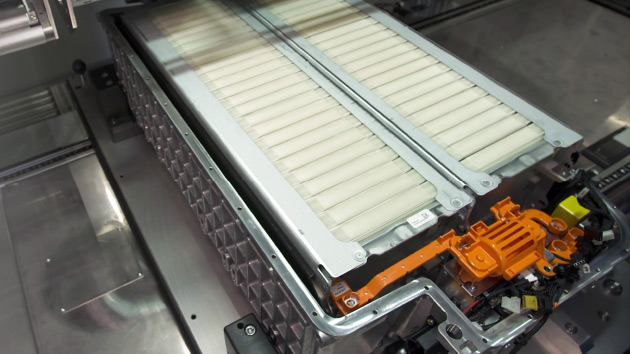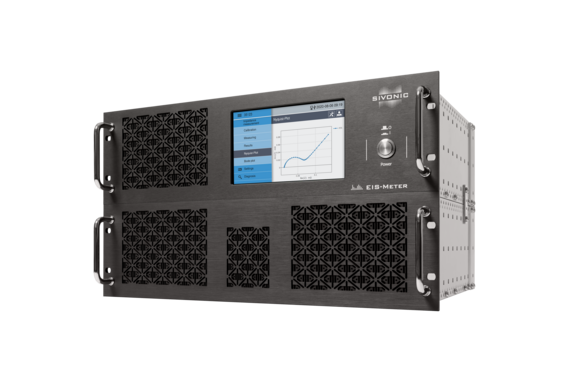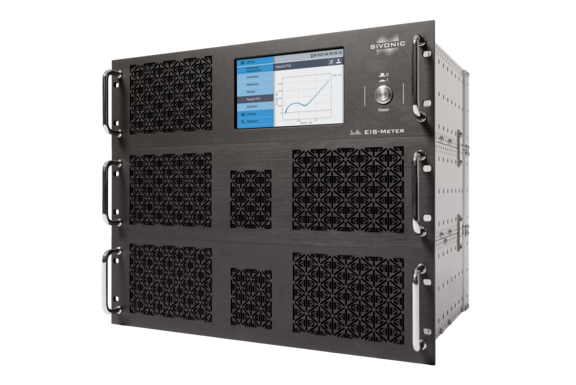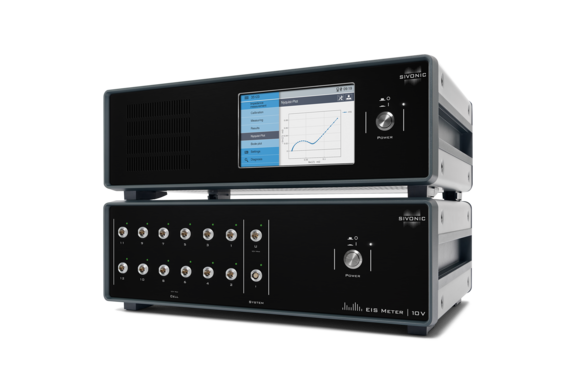The EIS-Meter ®
The SIVONIC "EIS-Meter ®" is an innovative impedance spectrometer that combines modern measurement technology with high precision. It has been developed for a wide range of applications – from research to industrial processes.
The device measures even the smallest impedances in the microohm range, such as those found in batteries, fuel cells, or electrolyzers. It provides reliable results over a wide frequency range with high accuracy, even under challenging measurement conditions. Thanks to numerous industrial interfaces, it can be easily integrated into laboratories, test benches, and complex systems. It adapts flexibly to various operating environments.
The EIS-Meter is suitable for different test samples, such as individual cells, shorts stacks, and full stacks. It handles samples with voltages of up to 1000 V and DC currents of up to 5000 A. The impedance spectra are measured directly under real operating conditions, providing users with precise data for thorough process analysis. Its intuitive operation ensures rapid training and efficient everyday use.
Additionally, the measurement system can be expanded with a synchronous multi-channel analyzer. This allows for the use of additional measurement channels to analyze cells in a stack more quickly. Online analysis functions monitor process data in real time, enabling immediate evaluations and optimizations of the measurement procedures. Overall, the EIS-Meter offers a technically advanced and expandable solution that fully meets the requirements of modern industrial processes.
Properties
| Parameter | Value |
|---|---|
| Frequency range | 0,1 mHz to 20 kHz (optional 100 kHz) |
| Impedance accuracy | ± 0,5 % |
| Phase angle accuracy | ± 1° |
| Modulation current (AC) | ±10 A, ±30 A, ±50 A |
| Modulation mode | Galvanostatic, Pseudo-Potentiostatic |
| Modulator | Bidirectional (charge neutral) |
| Maximum DC Voltage | 10 V, 100 V, 600 V, 1.000 V |
| Maximum DC Current | 100 A, 500 A, 1.000 A, 2.000 A, 5.000 A |
| Display | Touch |
| Remote control | via browser |
| Interfaces | Ethernet, RS232 |
| Interfaces optional | EtherCAT |
| Setup calibration | Yes |
| Visualization | Nyquist Plot, Bode Plot |
With over 20 years of experience in impedance spectroscopy, SIVONIC is setting new standards in measurement technology.
The EIS meter was specifically developed to meet the demanding requirements of modern testing processes and impresses with maximum precision and reliability - even at extremely low impedances in the micro-ohm range.
The device is ideal for testing batteries, fuel cells and electrolytic cells. Thanks to its outstanding sensitivity and measuring accuracy, it provides in-depth insights into the electrochemical properties of these components. This makes a decisive contribution to quality assurance and the optimization of development and production processes.
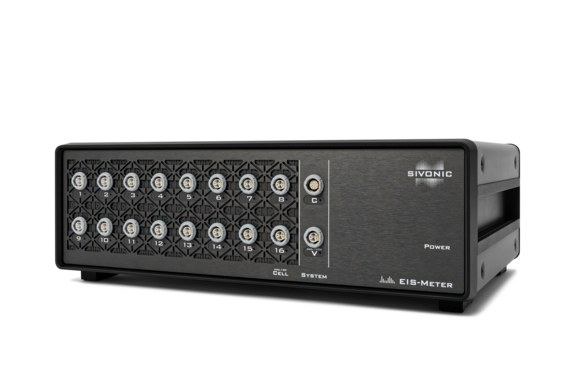
Not what you were looking for?
Click here for the multi-channel EIS-Meter for impedance spectroscopy at single cells in stacks.
